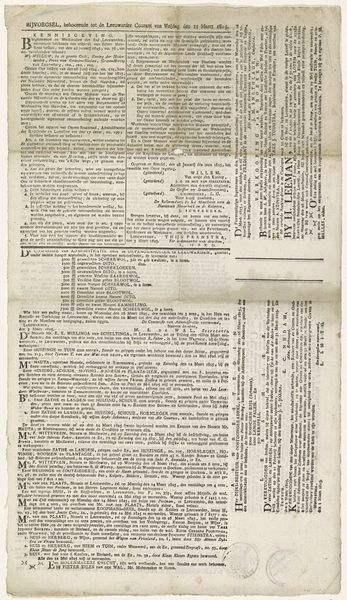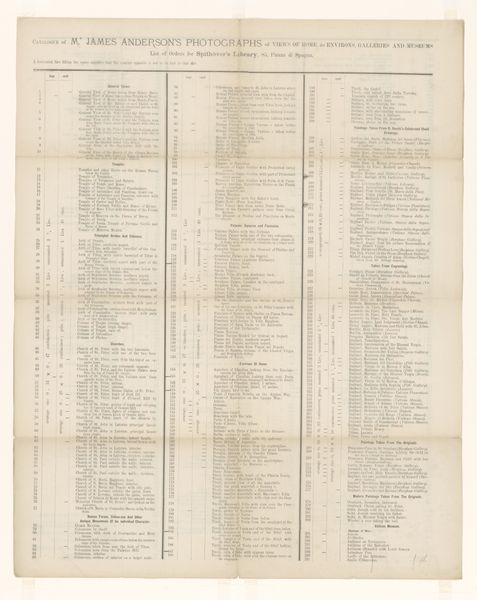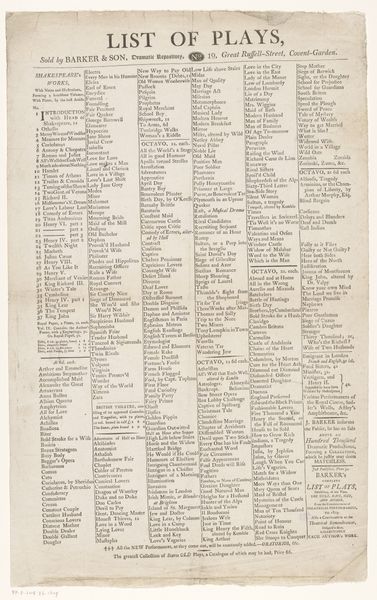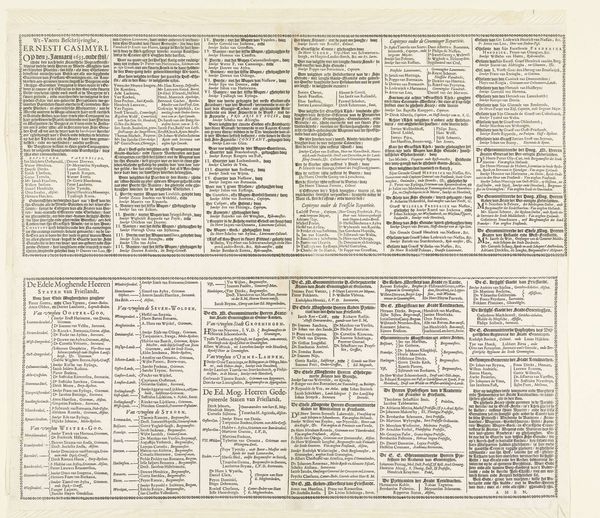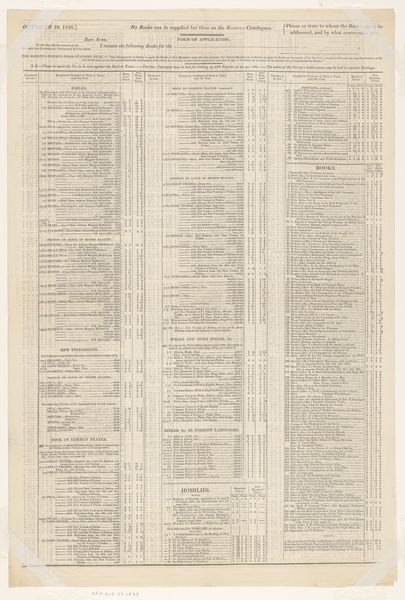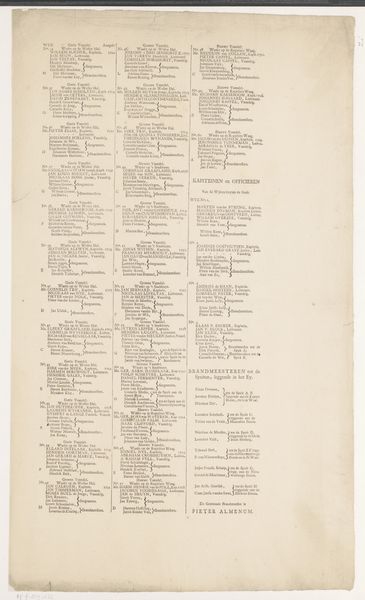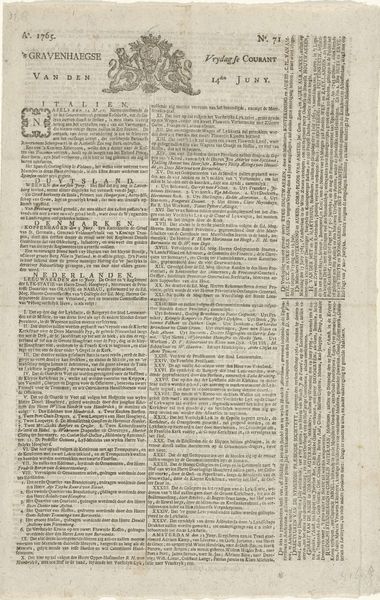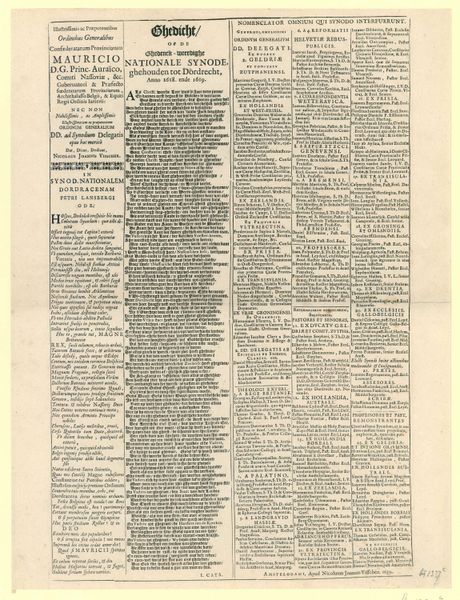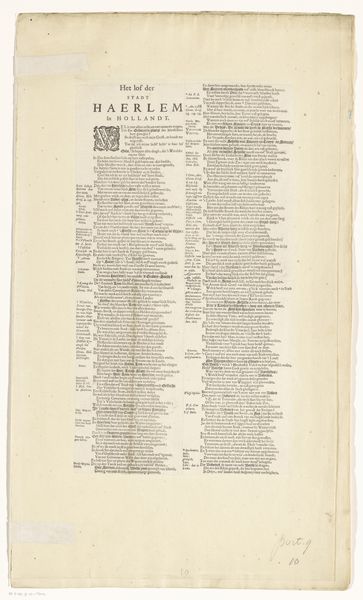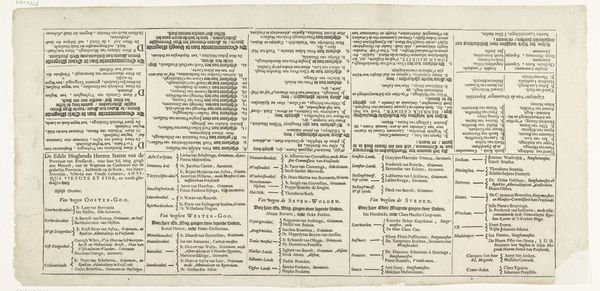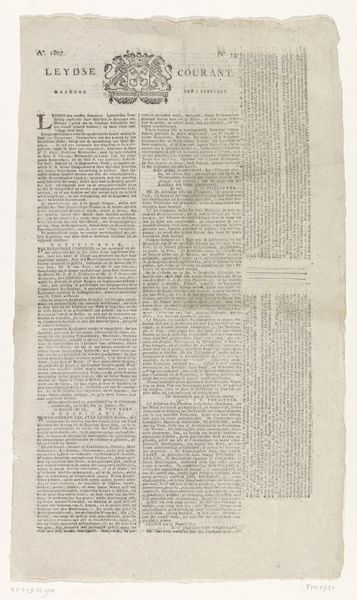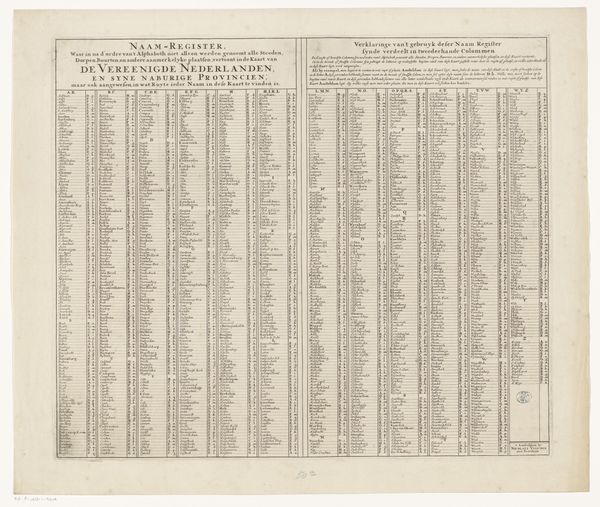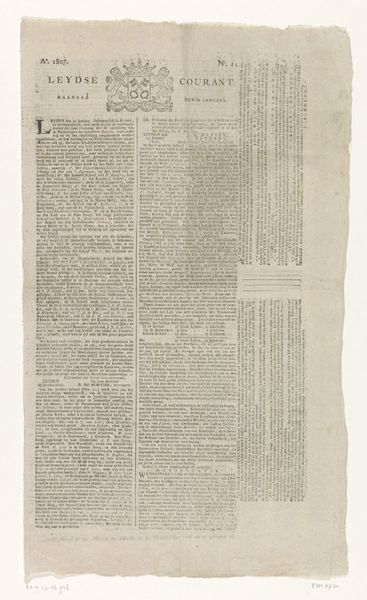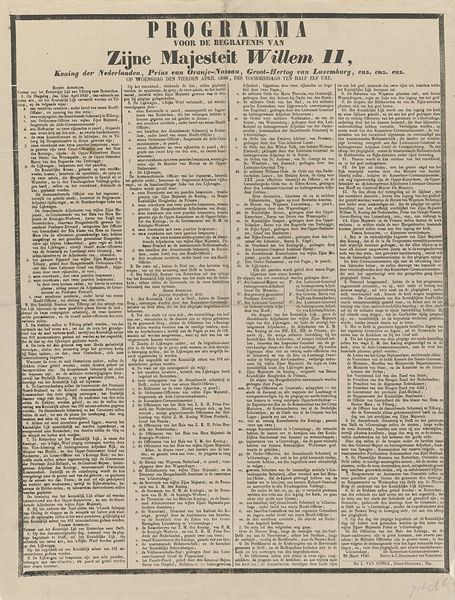
Catalogus van bladmuziek verkrijgbaar bij Jean Julien Hummel te Amsterdam 1791
0:00
0:00
graphic-art, print, paper, typography
#
graphic-art
# print
#
paper
#
typography
Dimensions: height 395 mm, width 250 mm
Copyright: Rijks Museum: Open Domain
Editor: So, this is a catalogue of sheet music available from Jean Julien Hummel in Amsterdam, printed in 1791. It's a graphic art print on paper, purely text, seemingly simple. But something about the typography gives it a formal almost austere feeling. What do you see in this piece? Curator: The feeling is very apt! Typography in such ephemera like this – catalogues, pamphlets – acted almost like a cultural fingerprint. Each font, its weight and placement, reflects the ideals of the era, and aspirations of Hummel’s publishing house. More than a mere listing, this presents music as a refined, intellectually stimulating pursuit, doesn't it? Editor: I hadn’t thought of it like that. More than just type, each font speaks of aspirations. How so? Curator: Notice the contrast between the elegant title font and the plainer listing? That juxtaposition highlights a symbolic hierarchy. The title with its curves alludes to elegance, quality, trustworthiness while the practical list denotes a business, efficient service. What lasting impressions does that contrast evoke, would you say? Editor: It is kind of like two sides of the same coin: Beauty in art with practical business needs. And what the cultural significance to consider in this work? Curator: Think about what music publishing signified back then, the spread of knowledge and art. This wasn't just about selling notes. It was part of a cultural movement, amplifying Enlightenment values of reason and progress. Now look again at that heading. Doesn't it feel like more than an advertisement, like a symbol of a changing world? Editor: Yes, absolutely. It’s a window into the cultural and social values of the time. It's fascinating how much symbolism can be packed into what seems like a simple list. I'll never look at a printed document the same way again! Curator: Exactly. Images, type, carries cultural memory; they continue speaking volumes across centuries, and invite us to reflect what stays resonant.
Comments
No comments
Be the first to comment and join the conversation on the ultimate creative platform.
